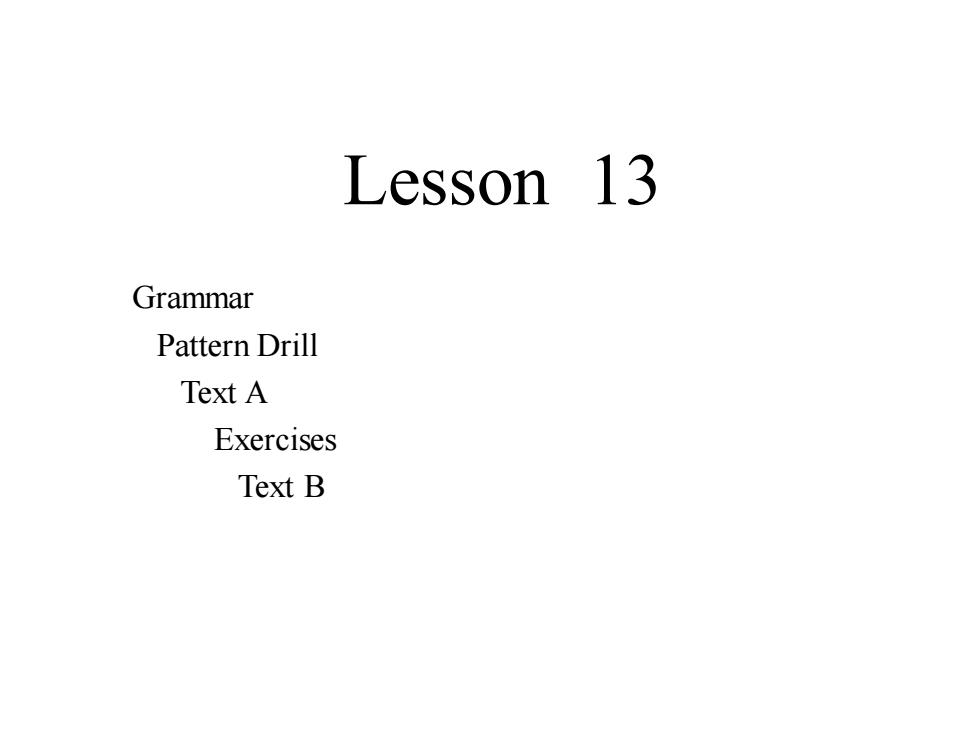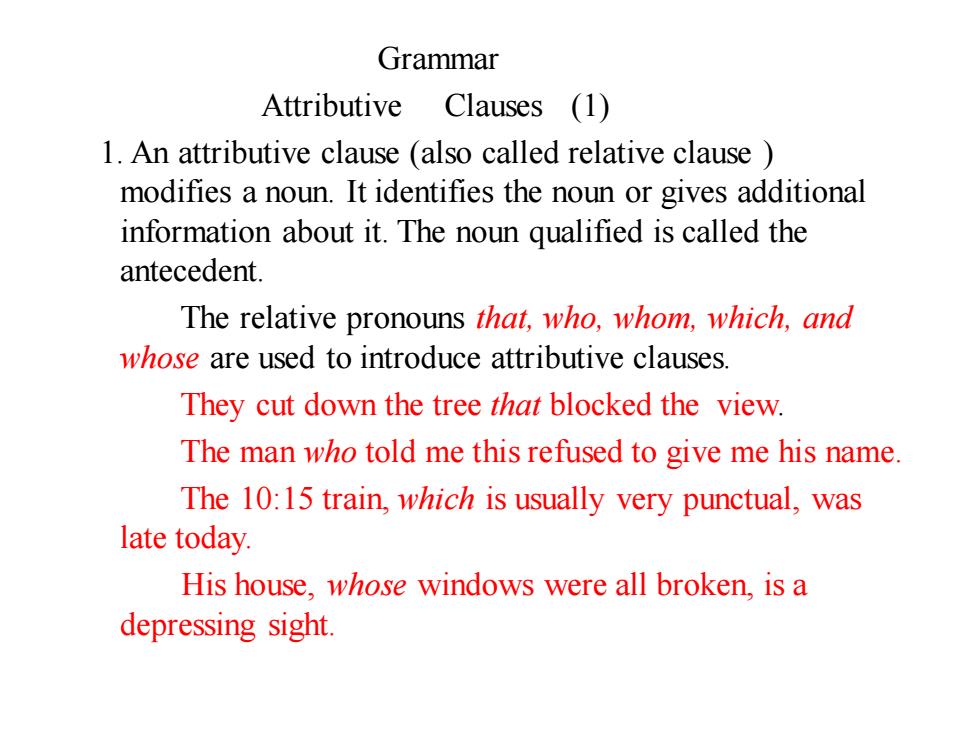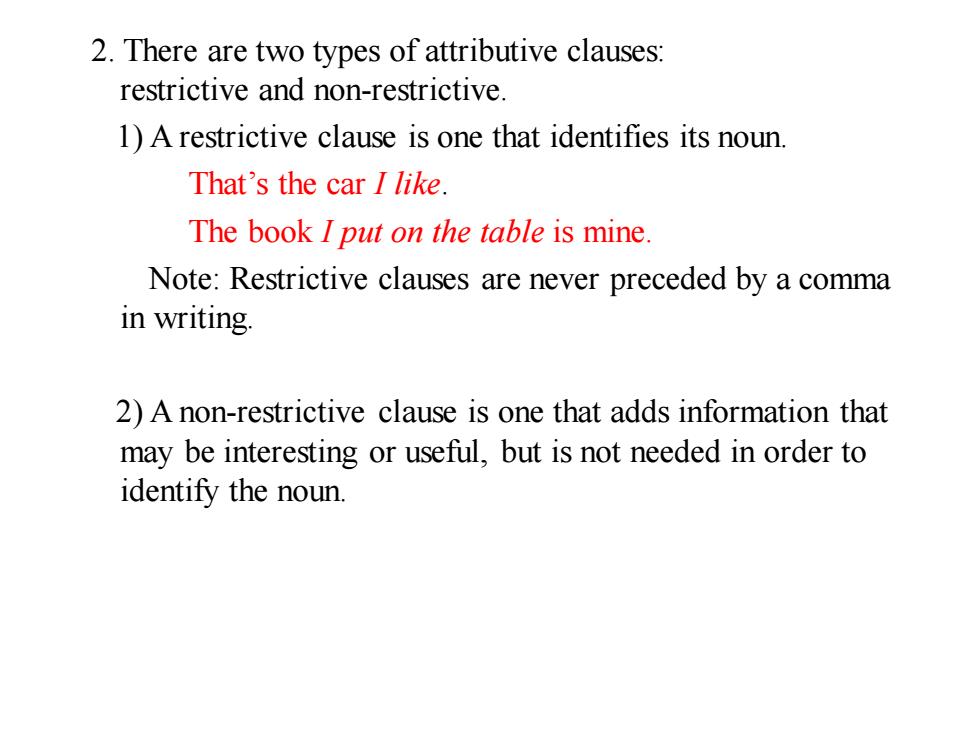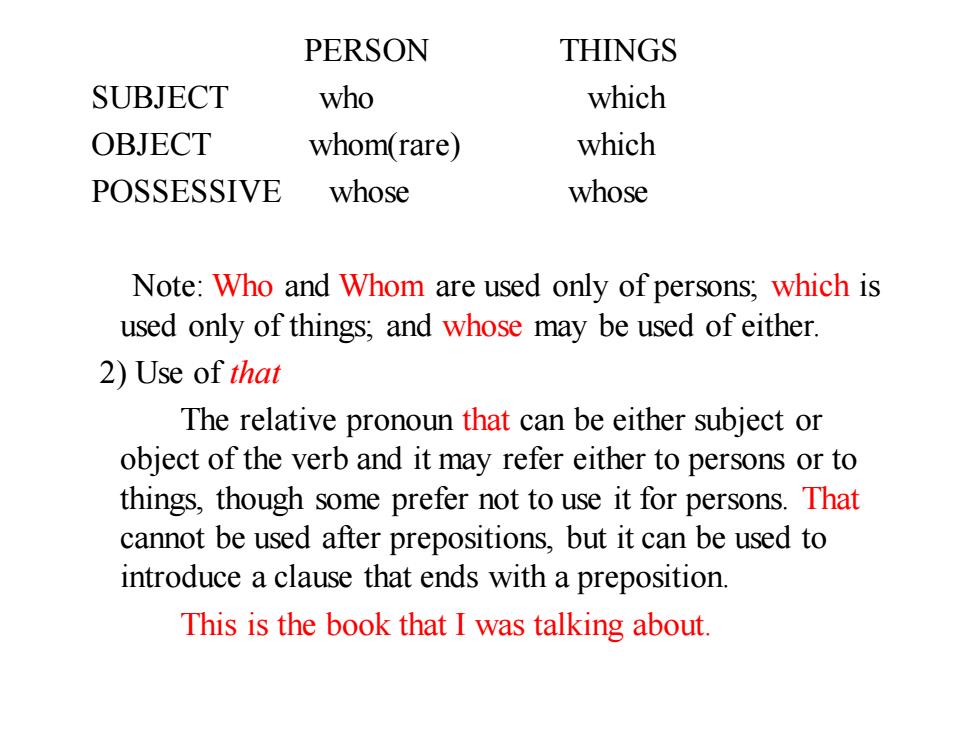
Lesson 13 Grammar Pattern Drill Text A Exercises Text B
Lesson 13 Grammar Pattern Drill Text A Exercises Text B

Grammar Attributive Clauses (1) 1.An attributive clause (also called relative clause modifies a noun.It identifies the noun or gives additional information about it.The noun qualified is called the antecedent. The relative pronouns that,who,whom,which,and whose are used to introduce attributive clauses. They cut down the tree that blocked the view. The man who told me this refused to give me his name. The 10:15 train,which is usually very punctual,was late today. His house,whose windows were all broken,is a depressing sight
Grammar Attributive Clauses (1) 1. An attributive clause (also called relative clause ) modifies a noun. It identifies the noun or gives additional information about it. The noun qualified is called the antecedent. The relative pronouns that, who, whom, which, and whose are used to introduce attributive clauses. They cut down the tree that blocked the view. The man who told me this refused to give me his name. The 10:15 train, which is usually very punctual, was late today. His house, whose windows were all broken, is a depressing sight

2.There are two types of attributive clauses: restrictive and non-restrictive. 1)A restrictive clause is one that identifies its noun. That's the car I like. The book I put on the table is mine. Note:Restrictive clauses are never preceded by a comma in writing. 2)A non-restrictive clause is one that adds information that may be interesting or useful,but is not needed in order to identify the noun
2. There are two types of attributive clauses: restrictive and non-restrictive. 1) A restrictive clause is one that identifies its noun. That’s the car I like. The book I put on the table is mine. Note: Restrictive clauses are never preceded by a comma in writing. 2) A non-restrictive clause is one that adds information that may be interesting or useful, but is not needed in order to identify the noun

Mr.Jones,for whom John was working, was very generous about overtime payments. Radium,which is a rare element,is used in medicine. Note:A non-restrictive clause is often written with commas before and after,and is spoken with small pauses. 3.Relative pronouns are words,which join the attributive clauses to the main clauses.At the same time,they do the work of ordinary pronouns. 1)Use of relative pronouns,except that
Mr. Jones, for whom John was working, was very generous about overtime payments. Radium, which is a rare element, is used in medicine. Note: A non-restrictive clause is often written with commas before and after, and is spoken with small pauses. 3. Relative pronouns are words, which join the attributive clauses to the main clauses. At the same time, they do the work of ordinary pronouns. 1) Use of relative pronouns, except that

PERSON THINGS SUBJECT who which OBJECT whom(rare) which POSSESSIVE whose whose Note:Who and Whom are used only of persons;which is used only of things;and whose may be used of either. 2)Use of that The relative pronoun that can be either subject or object of the verb and it may refer either to persons or to things,though some prefer not to use it for persons.That cannot be used after prepositions,but it can be used to introduce a clause that ends with a preposition. This is the book that I was talking about
PERSON THINGS SUBJECT who which OBJECT whom(rare) which POSSESSIVE whose whose Note: Who and Whom are used only of persons; which is used only of things; and whose may be used of either. 2) Use of that The relative pronoun that can be either subject or object of the verb and it may refer either to persons or to things, though some prefer not to use it for persons. That cannot be used after prepositions, but it can be used to introduce a clause that ends with a preposition. This is the book that I was talking about